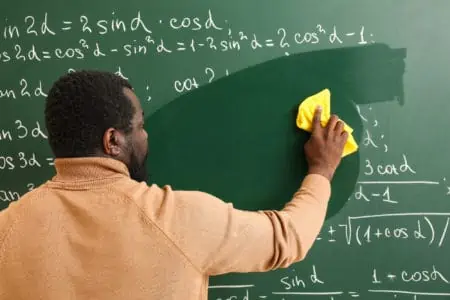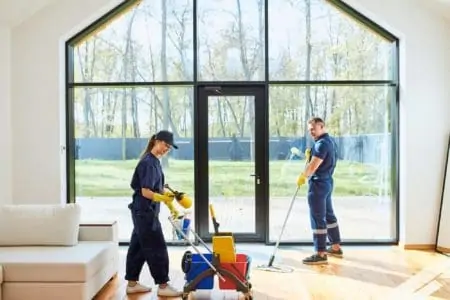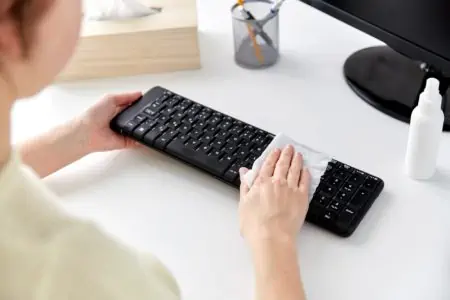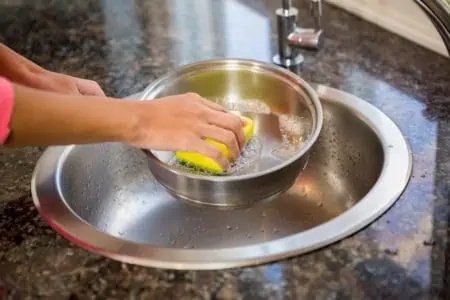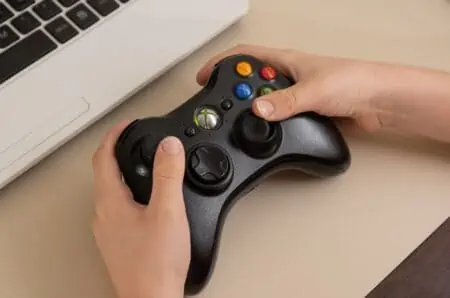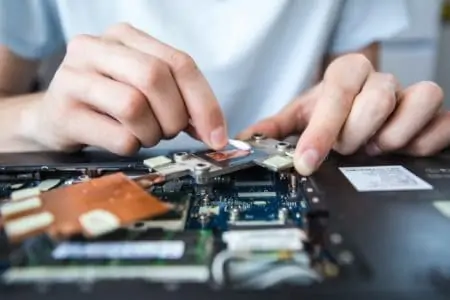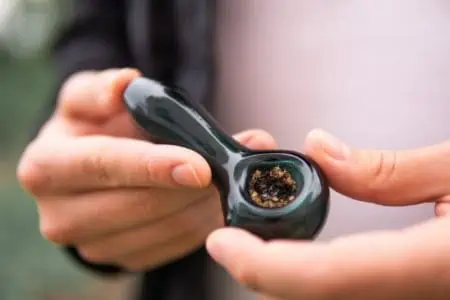Wiping a chalkboard with an eraser at the end of the day can remove some of the primary residue. But after a while, chalkboards are often left with a white, streaky, unsightly mess.
We’ve put together a list of 10 DIY ways to clean a chalkboard without an eraser. These methods will help you deep clean your chalkboard once and for all.
Whether you’re a teacher or just have a chalkboard as decor, keep reading for our fantastic and valuable hacks.
Key Takeaways
- Use a solution of warm water and dish soap to clean the chalkboard with a microfiber cloth.
- Vinegar, coke, and baking soda are other effective methods for cleaning a chalkboard.
- Avoid using abrasive cleaners and excessive water to prevent damage to the chalkboard.
- Proper maintenance and using high-quality chalkboard cleaning cloths can help prevent chalkboards from becoming dirty.
How Do You Clean a Chalkboard Without Ruining It?
The last thing you want is to ruin the chalkboard. Keep these tips in mind to make sure you don’t cause any damage during the cleaning process:
- Be careful of commercial cleaners. They aren’t designed to clean chalkboards, so they may cause damage. Instead, make sure that the cleaner you’re considering specifies that it’s suitable for chalkboards.
- Don’t expose the chalkboard to water daily. This can cause damage.
- Only clean your chalkboard when necessary, as repeated cleaning can ruin the surface.
- Don’t use abrasive cleaners as this can scratch the board.
How to Clean a Chalkboard Without an Eraser
Let’s get into different ways to bring sparkle and shine back to your chalkboard without an eraser! Your eraser is a great tool for daily and general cleaning, but when you want a deeper clean, these tips will help.
With Vinegar
Vinegar is a super versatile cleaning product, and yes, it works on chalkboards, too.
Mix together a 1:1 ratio of water and distilled white vinegar. Apply it to your chalkboard using a clean cloth. Make sure the cloth isn’t dripping wet; otherwise, it will leave streaks. Let the board air dry, and enjoy the cleanliness!
With Coke
Coke can clean! We know it sounds crazy, but it works like a charm.
To use this method, pour ½ cup of coke into a bowl. Dampen a cloth with water, wring it out, then dip it into the bowl of coke. Wipe the board with the cloth and watch the chalk dust disappear.
If you’re wondering whether it will leave a sticky residue, the answer is no. It shouldn’t. If you find that it leaves a sticky residue, dilute the coke with a bit of water, making a 3:1 ratio of coke and water.
With Chalkboard Cleaner
Some people like a regular, store-bought chalkboard cleaner. These are very reliable, and you know that it’s made specifically with a chalkboard in mind! A great option is the VersaChalk Spray. No matter which brand you buy, make sure to read the instructions for the best method.
With Warm Water
For regular cleaning without extra products, you can just use warm water on a cloth. Don’t do this too often because, as we mentioned, too much water exposure can damage your blackboard. But if you want to quickly do a deeper clean at the end of the school day, this is a straightforward and quick method.
With Windex
Is liquid chalk ruining your chalkboard? Windex can help.
Cover the entire board with Windex and leave it for five minutes. Wipe it clean with a microfiber cloth. Repeat until the chalk is gone. You may need to go through a few microfiber cloths, but it’s a great hack!
With Dish Soap
Dish soap is the answer to many household cleaning questions. To clean your chalkboard with dish soap, mix warm water and a few drops of dish soap. Dampen a microfiber cloth in the solution and wipe your board. You may need to scrub a little harder on tough spots. Dampen a clean microfiber cloth with plain water to rinse the board. Let it air dry.
This works great for chalkboard paint walls. If you have some in your home, give this method a try. Just keep in mind you may need to repaint parts of your wall once you’ve tried this trick.
With Lemon Oil
Lemon oil is a great cleanser, it’s anti-bacterial, and of course, it smells super fresh! This natural cleanser will remove chalk dust while providing a smooth, streak-free finish.
Pour two teaspoons of lemon oil onto a dry cloth. Fold the cloth into a square and seal it in a plastic bag for one day. After 24 hours, wipe the chalkboard with the cloth.
It’s a longer process than our other suggestions, but if you want a fresh-smelling board with no residue, then this is a hack to try!
With Baking Soda
Another natural method for cleaning chalkboards is baking soda. Make a paste of water and baking soda. Apply the paste to the chalkboard using a dampened microfiber cloth. Apply more paste on stained areas. Where necessary, scrub gently. This is particularly helpful if there are crayon stains on your chalkboard. Rinse the chalkboard after 30 minutes, then let it air dry.
With Magic Eraser
Magic Eraser can remove chalk residue and chalk markers. Cut off a piece of Magic Eraser, dampen it, then start gently scrubbing. You’ll notice the chalk coming off pretty immediately! Alternate between using the Magic Eraser and wiping the residue off with a cotton rag. Continue until the chalkboard looks as good as new.
Top Tip
With Chalkboard Paint
If you really can’t budge the stains off any other way, and you don’t want to buy a new chalkboard, try this.
With some chalkboard paint, simply paint over your stained chalkboard. Give it a few coats to ensure that you can’t see the previous stains. Now you have a fresh chalkboard that looks as good as new!
With Isopropyl Alcohol
If you have permanent marker stains on your chalkboard, isopropyl alcohol is coming to the rescue!
Dampen a clean, dry cloth with isopropyl alcohol. For chalkboards, ensure that it’s only a little bit. Wipe the board in circular motions and watch the marker residue come loose. Rinse with cool water. Dry the board with a separate cloth. Repeat these steps until the chalkboard is clean and the marks are gone.
How to Clean a Chalkboard Eraser
Now that your chalkboards are spotless, how do you clean the eraser? They can get pretty murky and dusty after a while, so it’s important to give them a good clean every once in a while.
- Bang the erasers against a hard surface, such as the floor or each other. Do this until most of the excess dust stops coming off.
- Rub the erasers against a white towel to remove excess dust. Do this until less dust shows up. Make sure to wash the towels.
- Use your vacuum attachment to vacuum your chalkboard erasers. This will pick up embedded dust. Make sure to use a low setting to avoid damaging the eraser.
- Submerge the erasers in a bucket of warm water.
- Use your hands to massage dust from the erasers while submerged in the bucket.
- Lay a clean towel flat on a surface. Set the erasers onto the towel and let them air dry. This may take a few days.
Tips For Preventing Chalkboards From Becoming Dirty
You don’t want to spend hours cleaning your chalkboards at the end of every week. Here are some hacks to make sure that you stay on top of your chalkboard cleaning:
- Use chalkboard markers. Regular chalk is very dusty, which can lead to your chalkboard becoming extra dirty each week! Chalkboard markers don’t leave behind a dusty residue.
- Clean the board from top to bottom. This ensures you end up cleaning any dust that’s fallen from the top.
- Invest in high-quality chalkboard cleaning cloths that absorb more dust and residue than your average eraser.
- Don’t write on wet chalkboards. This can cause chalk to stick and make it harder to remove later.
- Don’t wash your chalkboards daily. This can cause damage and make the chalkboards look dirtier. Only wash your chalkboard when necessary.
FAQs
Chalk It Up to Experience
Cleaning a chalkboard isn’t the most simple task, but these tips and tricks can help. In the end, it will take a little bit of trial and error as you search for your favorite cleaning method.
Just make sure to avoid using water regularly, always do a spot test with your chalk, and when in doubt, employ your students to clean the chalkboard!
